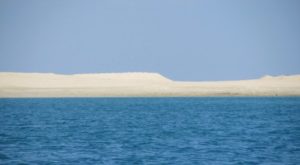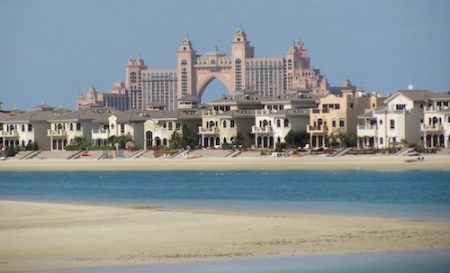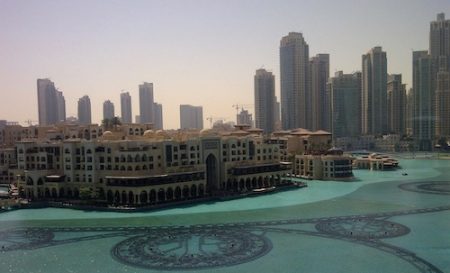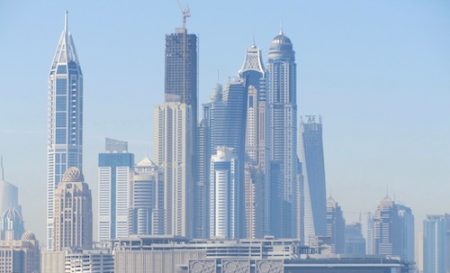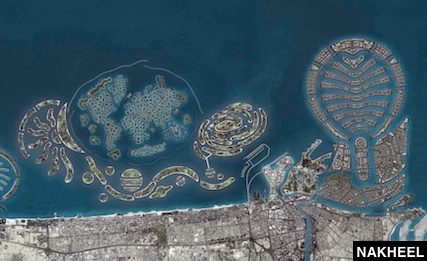
COLIN SIMPSON
MORE than ten years have passed since the dark clouds of the global financial meltdown started to gather above the sands and skyscrapers of Dubai.
It’s worth recalling a single proposed development among many to understand the build-and-they-will-come craziness that prevailed in Dubai in 2008. Bawadi – Arabic for “desert” – was to be a massive hotel, leisure and shopping extravaganza that would rise up from the sands along a 10-kilometre “boulevard”.
It was first announced in May 2006, and was to cost $27 billion with completion due in 2014. The hotels were to include the world’s largest, Asia Asia, with 6,500 rooms, and others would be themed around the Wild West, Africa, Europe and a pirates’ cove. The Holly Bolly Hotel was to be a mix of the US and Indian film industries.
Size certainly seemed to matter in Dubai back then. There was a lot of talk about “the world’s largest”, whether it be a hotel, a tower, a shopping mall or, perhaps less impressively, an acrylic panel (it’s at the Dubai Mall’s aquarium).

The head of Bawadi, when asked about similarities between the project and Las Vegas, told Arabian Business magazine: “People relate Bawadi to Vegas because it’s one boulevard or strip. But then ours is at least four times the size of theirs.”
By May 2007 the planners had decided that a mere 31 new hotels in a single development wouldn’t be enough, so the number was increased to 51, with the total number of rooms rising from 29,000 to 60,000.
Bawadi was to have the world’s largest shopping area and “longest hospitality boulevard”. And investment in the project was to be doubled to $54 billion – to put that in context, Dubai’s gross domestic product in 2008 was $82 billion.
It was reported that a ten-kilometre underground shopping arcade would be built beneath the entire length of the strip, connecting all the hotels, malls and other attractions. Customers would be able to walk from one end to the other, giving a new meaning to the phrase “shop till you drop”.
There was even some, albeit modest, activity on the ground along Al Qudra Road, where Bawadi was to be built. Large cut-out hoardings of the planned hotels appeared, indicating where each would be.
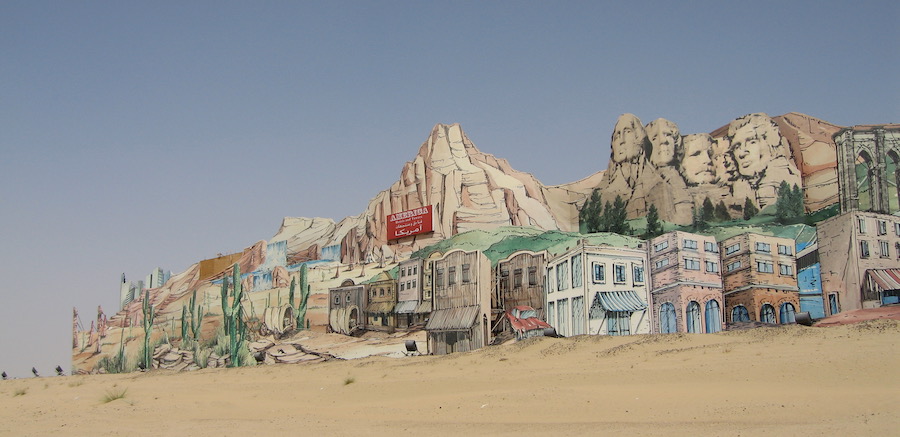

And then came the financial crash, which left Dubai facing a massive debt crisis, and Bawadi ground to a halt before construction work had begun on even one of the hotels, far less 51.
The project was revealed to be nothing more than a mirage, its boulevard one of broken dreams, and the cut-outs along Al Qudra Road were discreetly removed.

Now here’s the thing – though Bawadi, had it been built, would have been vast, it was actually just a microcosm of what was happening in Dubai at the time. It was meant to be only part of a much larger development called Dubailand, and dozens of other massive projects were announced in the years leading up to the crash. Dubailand, touted as the largest collection of theme parks in the world, was meant to cover a whopping 107 square miles. A sales office with detailed models was built and residential and recreational developments were completed. However, the theme park plan came to little, and proposals for a Universal Studios park were scrapped a couple of years ago. Sue and I had moved to Dubai in 2007 as the construction boom fuelled by easy credit was reaching its peak. It seemed as if mega-projects were being announced every week as companies that grandiosely described themselves as “master developers” vied with each other to produce the biggest, costliest, glitziest and most eye-catching designs. Creating elaborate miniature representations of vast, ostentatious projects for Dubai developers became an important income stream for the makers of architectural models.

There was to be an underwater hotel, multiple replicas of the Pyramids, the Taj Mahal and the Eiffel Tower, a rotating tower… the list was endless.
Dubai’s development boom was driven by the fact that its oil reserves were limited and dwindling fast. It urgently needed alternative revenue sources.
There’s no doubting its achievement in transforming itself into a shipping and aviation hub and tourism hotspot after 150 years of colonial neglect by Britain ended in 1971. And it did build the world’s tallest tower. But it over-reached itself spectacularly with all those wildly ambitious projects such as Bawadi.
It took years to clear up the mess. In 2015 Dubai Courts published a list of more than 150 projects that had been shelved, including the rotating tower.

It’s a good time to look back at the Bawadi story, as there are signs that the good old, bad old days are returning in Dubai. Talk of a replica of the Taj Mahal that would be bigger than the original and house a shopping mall and luxury hotel continues to rumble on, work on yet another tallest structure in the world is underway, and the world’s largest picture frame (yes) has already been completed.
In 2016 it was even reported that Bawadi was to be revived. Nothing more has been heard of this, and I’m not holding my breath.
My request to the developers for information failed to elicit a response, and the results of further inquiries suggest there are no plans to revive the project.
Back in 2010 I bumped into someone who’d been a top executive at Bawadi at, of all places, the set of the fourth Mission Impossible movie, which was being filmed in Dubai; he was doing a stint as an extra. In 2013 a bicycle track was opened along Al Qudra Road.
Top picture: Promotional rendering of the proposed Desert Gate hotels; photo: Bawadi.
June 2019
Dubai Projects That Got Stuck in the Sand
PALM JEBEL ALI: This was to be one of three giant palm tree-shaped artificial islands jutting miles out into the Gulf. Together with an associated development called Dubai Waterfront it was meant to house 1.7 million people. In 2008 Dubai’s population stood at 1.65 million.
WHAT HAPPENED: Much of the reclamation work had been completed by the time work was halted because of the crash. Today the Palm and a crescent surrounding it stand empty, undeveloped and uninhabited.
PALM DEIRA: Another artificial island, this one was originally intended to be 4.5 miles wide and stretch 7.7 miles out to sea. More than a million people were meant to settle there.
WHAT HAPPENED: Reclamation was halted before work on the palm shape had begun. A few areas were reclaimed close to the coast, and these now form the basis of a new, much more modest project called Deira Islands.
THE WORLD ISLANDS: A collection of 300 artificial islands supposedly in the shape of countries. Buyers were invited to purchase islands and build hotels, resorts and homes on them.
WHAT HAPPENED: A handful of islands have been developed, but most remain empty blobs of sand surrounded by the blue waters of the Gulf.
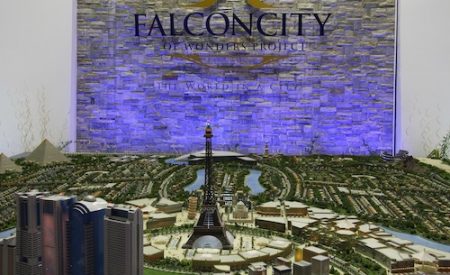 FALCONCITY OF WONDERS: Falcon-shaped mega-development that was to have 30,000 homes and recreations of the famous buildings and structures such as the pyramids, the Eiffel Tower, the Leaning Tower of Pisa and the Great Wall of China.
FALCONCITY OF WONDERS: Falcon-shaped mega-development that was to have 30,000 homes and recreations of the famous buildings and structures such as the pyramids, the Eiffel Tower, the Leaning Tower of Pisa and the Great Wall of China.
WHAT HAPPENED: Several residential units have been completed, but most of the site remains undeveloped and there’s no sign of the Eiffel Tower and the rest. Cement for the foundations of one of the pyramids has reportedly been poured.
...And Ones That Succeeded
RELATED
 DUBAI IS A PLACE where there’s always something new to see – join us we visit 10 of them, including the QE2 Hotel, the wacky Dubai Frame, and our favourite bar in the city. READ MORE
DUBAI IS A PLACE where there’s always something new to see – join us we visit 10 of them, including the QE2 Hotel, the wacky Dubai Frame, and our favourite bar in the city. READ MORE
 THE QUEEN ELIZABETH 2, the much-loved liner that traversed the world’s oceans for nearly 40 years, has opened as a floating luxury hotel in Dubai, bringing a tortuous 10-year saga round full circle. READ MORE
THE QUEEN ELIZABETH 2, the much-loved liner that traversed the world’s oceans for nearly 40 years, has opened as a floating luxury hotel in Dubai, bringing a tortuous 10-year saga round full circle. READ MORE
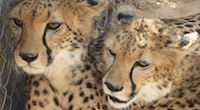 GULF ARABS LOVE BIG CATS and other exotic animals, and many sheikhs have private zoos. Normally these places are strictly out of bounds, but Afaranwide managed to have a look inside. READ MORE
GULF ARABS LOVE BIG CATS and other exotic animals, and many sheikhs have private zoos. Normally these places are strictly out of bounds, but Afaranwide managed to have a look inside. READ MORE
 SUDDENLY, THE ROOM TURNED BLACK: I have no photographs of the weddings of Dubai locals I’ve been to. You’re not allowed to take phones or cameras along, and only the official… READ MORE
SUDDENLY, THE ROOM TURNED BLACK: I have no photographs of the weddings of Dubai locals I’ve been to. You’re not allowed to take phones or cameras along, and only the official… READ MORE
RECOMMENDED
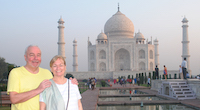 WELCOME TO OUR WORLD! Afaranwide’s home page – this is where you can find out about our latest posts and other highlights. READ MORE
WELCOME TO OUR WORLD! Afaranwide’s home page – this is where you can find out about our latest posts and other highlights. READ MORE
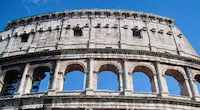 TOP 10 ATTRACTIONS: Many of the world’s most popular tourists sites are closed because of the coronavirus crisis, but you can still visit them virtually while you’re self-isolating. READ MORE
TOP 10 ATTRACTIONS: Many of the world’s most popular tourists sites are closed because of the coronavirus crisis, but you can still visit them virtually while you’re self-isolating. READ MORE
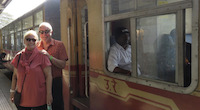 SHIMLA, QUEEN OF THE HILLS: Government officials once retreated to Shimla in the foothills of the Himalayas to escape India’s blazing hot summers. Now tourists make the same journey. READ MORE
SHIMLA, QUEEN OF THE HILLS: Government officials once retreated to Shimla in the foothills of the Himalayas to escape India’s blazing hot summers. Now tourists make the same journey. READ MORE
 TEN THINGS WE LEARNED: Our up-to-the-minute guide to creating a website, one step at a time. The costs, the mistakes – it’s what we wish we’d known when we started blogging. READ MORE
TEN THINGS WE LEARNED: Our up-to-the-minute guide to creating a website, one step at a time. The costs, the mistakes – it’s what we wish we’d known when we started blogging. READ MORE
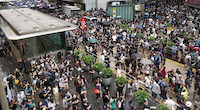 TROUBLED TIMES FOR EXPATS: Moving abroad can seem an idyllic prospect, but what happens when sudden upheavals or the inescapable realities of life intrude? READ MORE
TROUBLED TIMES FOR EXPATS: Moving abroad can seem an idyllic prospect, but what happens when sudden upheavals or the inescapable realities of life intrude? READ MORE
LET'S KEEP IN TOUCH!
The Lost Malls and
Five-Stars of Dubai

COLIN SIMPSON
MORE than ten years have passed since the dark clouds of the global financial meltdown started to gather above the sands and skyscrapers of Dubai.
It’s worth recalling a single proposed development among many to understand the build-and-they-will-come craziness that prevailed in Dubai in 2008. Bawadi – Arabic for “desert” – was to be a massive hotel, leisure and shopping extravaganza that would rise up from the sands along a 10-kilometre “boulevard”.
It was first announced in May 2006, and was to cost $27 billion with completion due in 2014. The hotels were to include the world’s largest, Asia Asia, with 6,500 rooms, and others would be themed around the Wild West, Africa, Europe and a pirates’ cove. The Holly Bolly Hotel was to be a mix of the US and Indian film industries.
Size certainly seemed to matter in Dubai back then. There was a lot of talk about “the world’s largest”, whether it be a hotel, a tower, a shopping mall or, perhaps less impressively, an acrylic panel (it’s at the Dubai Mall’s aquarium).

The head of Bawadi, when asked about similarities between the project and Las Vegas, told Arabian Business magazine: “People relate Bawadi to Vegas because it’s one boulevard or strip. But then ours is at least four times the size of theirs.”
By May 2007 the planners had decided that a mere 31 new hotels in a single development wouldn’t be enough, so the number was increased to 51, with the total number of rooms rising from 29,000 to 60,000.
Bawadi was to have the world’s largest shopping area and “longest hospitality boulevard”. And investment in the project was to be doubled to $54 billion – to put that in context, Dubai’s gross domestic product in 2008 was $82 billion.
It was reported that a ten-kilometre underground shopping arcade would be built beneath the entire length of the strip, connecting all the hotels, malls and other attractions. Customers would be able to walk from one end to the other, giving a new meaning to the phrase “shop till you drop”.
There was even some, albeit modest, activity on the ground along Al Qudra Road, where Bawadi was to be built. Large cut-out hoardings of the planned hotels appeared, indicating where each would be.


And then came the financial crash, which left Dubai facing a massive debt crisis, and Bawadi ground to a halt before construction work had begun on even one of the hotels, far less 51.
The project was revealed to be nothing more than a mirage, its boulevard one of broken dreams, and the cut-outs along Al Qudra Road were discreetly removed.

Now here’s the thing – though Bawadi, had it been built, would have been vast, it was actually just a microcosm of what was happening in Dubai at the time. It was meant to be only part of a much larger development called Dubailand, and dozens of other massive projects were announced in the years leading up to the crash. Dubailand, touted as the largest collection of theme parks in the world, was meant to cover a whopping 107 square miles. A sales office with detailed models was built and residential and recreational developments were completed. However, the theme park plan came to little, and proposals for a Universal Studios park were scrapped a couple of years ago. Sue and I had moved to Dubai in 2007 as the construction boom fuelled by easy credit was reaching its peak. It seemed as if mega-projects were being announced every week as companies that grandiosely described themselves as “master developers” vied with each other to produce the biggest, costliest, glitziest and most eye-catching designs. Creating elaborate miniature representations of vast, ostentatious projects for Dubai developers became an important income stream for the makers of architectural models.

There was to be an underwater hotel, multiple replicas of the Pyramids, the Taj Mahal and the Eiffel Tower, a rotating tower… the list was endless.
Dubai’s development boom was driven by the fact that its oil reserves were limited and dwindling fast. It urgently needed alternative revenue sources.
There’s no doubting its achievement in transforming itself into a shipping and aviation hub and tourism hotspot after 150 years of colonial neglect by Britain ended in 1971. And it did build the world’s tallest tower. But it over-reached itself spectacularly with all those wildly ambitious projects such as Bawadi.
It took years to clear up the mess. In 2015 Dubai Courts published a list of more than 150 projects that had been shelved, including the rotating tower.

It’s a good time to look back at the Bawadi story, as there are signs that the good old, bad old days are returning in Dubai. Talk of a replica of the Taj Mahal that would be bigger than the original and house a shopping mall and luxury hotel continues to rumble on, work on yet another tallest structure in the world is underway, and the world’s largest picture frame (yes) has already been completed.
In 2016 it was even reported that Bawadi was to be revived. Nothing more has been heard of this, and I’m not holding my breath.
My request to the developers for information failed to elicit a response, and the results of further inquiries suggest there are no plans to revive the project.
Back in 2010 I bumped into someone who’d been a top executive at Bawadi at, of all places, the set of the fourth Mission Impossible movie, which was being filmed in Dubai; he was doing a stint as an extra. In 2013 a bicycle track was opened along Al Qudra Road.
Top picture: Promotional rendering of the proposed Desert Gate hotels; photo: Bawadi.
June 2019
Dubai Projects That Got Stuck in the Sand
PALM JEBEL ALI: This was to be one of three giant palm tree-shaped artificial islands jutting miles out into the Gulf. Together with an associated development called Dubai Waterfront it was meant to house 1.7 million people. In 2008 Dubai’s population stood at 1.65 million.
WHAT HAPPENED: Much of the reclamation work had been completed by the time work was halted because of the crash. Today the Palm and a crescent surrounding it stand empty, undeveloped and uninhabited.
PALM DEIRA: Another artificial island, this one was originally intended to be 4.5 miles wide and stretch 7.7 miles out to sea. More than a million people were meant to settle there.
WHAT HAPPENED: Reclamation was halted before work on the palm shape had begun. A few areas were reclaimed close to the coast, and these now form the basis of a new, much more modest project called Deira Islands.
THE WORLD ISLANDS: A collection of 300 artificial islands supposedly in the shape of countries. Buyers were invited to purchase islands and build hotels, resorts and homes on them.
WHAT HAPPENED: A handful of islands have been developed, but most remain empty blobs of sand surrounded by the blue waters of the Gulf.
 FALCONCITY OF WONDERS: Falcon-shaped mega-development that was to have 30,000 homes and recreations of the famous buildings and structures such as the pyramids, the Eiffel Tower, the Leaning Tower of Pisa and the Great Wall of China.
FALCONCITY OF WONDERS: Falcon-shaped mega-development that was to have 30,000 homes and recreations of the famous buildings and structures such as the pyramids, the Eiffel Tower, the Leaning Tower of Pisa and the Great Wall of China.
WHAT HAPPENED: Several residential units have been completed, but most of the site remains undeveloped and there’s no sign of the Eiffel Tower and the rest. Cement for the foundations of one of the pyramids has reportedly been poured.
...And Ones That Succeeded
RELATED
 DUBAI IS A PLACE where there’s always something new to see – join us we visit 10 of them, including the QE2 Hotel, the wacky Dubai Frame, and our favourite bar in the city. READ MORE
DUBAI IS A PLACE where there’s always something new to see – join us we visit 10 of them, including the QE2 Hotel, the wacky Dubai Frame, and our favourite bar in the city. READ MORE
 THE QUEEN ELIZABETH 2, the much-loved liner that traversed the world’s oceans for nearly 40 years, has opened as a floating luxury hotel in Dubai, bringing a tortuous 10-year saga round full circle. READ MORE
THE QUEEN ELIZABETH 2, the much-loved liner that traversed the world’s oceans for nearly 40 years, has opened as a floating luxury hotel in Dubai, bringing a tortuous 10-year saga round full circle. READ MORE
 GULF ARABS LOVE BIG CATS and other exotic animals, and many sheikhs have private zoos. Normally these places are strictly out of bounds, but Afaranwide managed to have a look inside. READ MORE
GULF ARABS LOVE BIG CATS and other exotic animals, and many sheikhs have private zoos. Normally these places are strictly out of bounds, but Afaranwide managed to have a look inside. READ MORE
 SUDDENLY, THE ROOM TURNED BLACK: I have no photographs of the weddings of Dubai locals I’ve been to. You’re not allowed to take phones or cameras along, and only the official… READ MORE
SUDDENLY, THE ROOM TURNED BLACK: I have no photographs of the weddings of Dubai locals I’ve been to. You’re not allowed to take phones or cameras along, and only the official… READ MORE
RECOMMENDED
 WELCOME TO OUR WORLD! Afaranwide’s home page – this is where you can find out about our latest posts and other highlights. READ MORE
WELCOME TO OUR WORLD! Afaranwide’s home page – this is where you can find out about our latest posts and other highlights. READ MORE
 TOP 10 ATTRACTIONS: Many of the world’s most popular tourists sites are closed because of the coronavirus crisis, but you can still visit them virtually while you’re self-isolating. READ MORE
TOP 10 ATTRACTIONS: Many of the world’s most popular tourists sites are closed because of the coronavirus crisis, but you can still visit them virtually while you’re self-isolating. READ MORE
 SHIMLA, QUEEN OF THE HILLS: Government officials once retreated to Shimla in the foothills of the Himalayas to escape India’s blazing hot summers. Now tourists make the same journey. READ MORE
SHIMLA, QUEEN OF THE HILLS: Government officials once retreated to Shimla in the foothills of the Himalayas to escape India’s blazing hot summers. Now tourists make the same journey. READ MORE
 TEN THINGS WE LEARNED: Our up-to-the-minute guide to creating a website, one step at a time. The costs, the mistakes – it’s what we wish we’d known when we started blogging. READ MORE
TEN THINGS WE LEARNED: Our up-to-the-minute guide to creating a website, one step at a time. The costs, the mistakes – it’s what we wish we’d known when we started blogging. READ MORE
 TROUBLED TIMES FOR EXPATS: Moving abroad can seem an idyllic prospect, but what happens when sudden upheavals or the inescapable realities of life intrude? READ MORE
TROUBLED TIMES FOR EXPATS: Moving abroad can seem an idyllic prospect, but what happens when sudden upheavals or the inescapable realities of life intrude? READ MORE
LET'S KEEP IN TOUCH!

The Lost Malls and
Five-Stars of Dubai

COLIN SIMPSON
MORE than ten years have passed since the dark clouds of the global financial meltdown started to gather above the sands and skyscrapers of Dubai.
It’s worth recalling a single proposed development among many to understand the build-and-they-will-come craziness that prevailed in Dubai in 2008. Bawadi – Arabic for “desert” – was to be a massive hotel, leisure and shopping extravaganza that would rise up from the sands along a 10-kilometre “boulevard”.
It was first announced in May 2006, and was to cost $27 billion with completion due in 2014. The hotels were to include the world’s largest, Asia Asia, with 6,500 rooms, and others would be themed around the Wild West, Africa, Europe and a pirates’ cove. The Holly Bolly Hotel was to be a mix of the US and Indian film industries.
Size certainly seemed to matter in Dubai back then. There was a lot of talk about “the world’s largest”, whether it be a hotel, a tower, a shopping mall or, perhaps less impressively, an acrylic panel (it’s at the Dubai Mall’s aquarium).

The head of Bawadi, when asked about similarities between the project and Las Vegas, told Arabian Business magazine: “People relate Bawadi to Vegas because it’s one boulevard or strip. But then ours is at least four times the size of theirs.”
By May 2007 the planners had decided that a mere 31 new hotels in a single development wouldn’t be enough, so the number was increased to 51, with the total number of rooms rising from 29,000 to 60,000.
Bawadi was to have the world’s largest shopping area and “longest hospitality boulevard”. And investment in the project was to be doubled to $54 billion – to put that in context, Dubai’s gross domestic product in 2008 was $82 billion.
It was reported that a ten-kilometre underground shopping arcade would be built beneath the entire length of the strip, connecting all the hotels, malls and other attractions. Customers would be able to walk from one end to the other, giving a new meaning to the phrase “shop till you drop”.
There was even some, albeit modest, activity on the ground along Al Qudra Road, where Bawadi was to be built. Large cut-out hoardings of the planned hotels appeared, indicating where each would be.


And then came the financial crash, which left Dubai facing a massive debt crisis, and Bawadi ground to a halt before construction work had begun on even one of the hotels, far less 51.
The project was revealed to be nothing more than a mirage, its boulevard one of broken dreams, and the cut-outs along Al Qudra Road were discreetly removed.
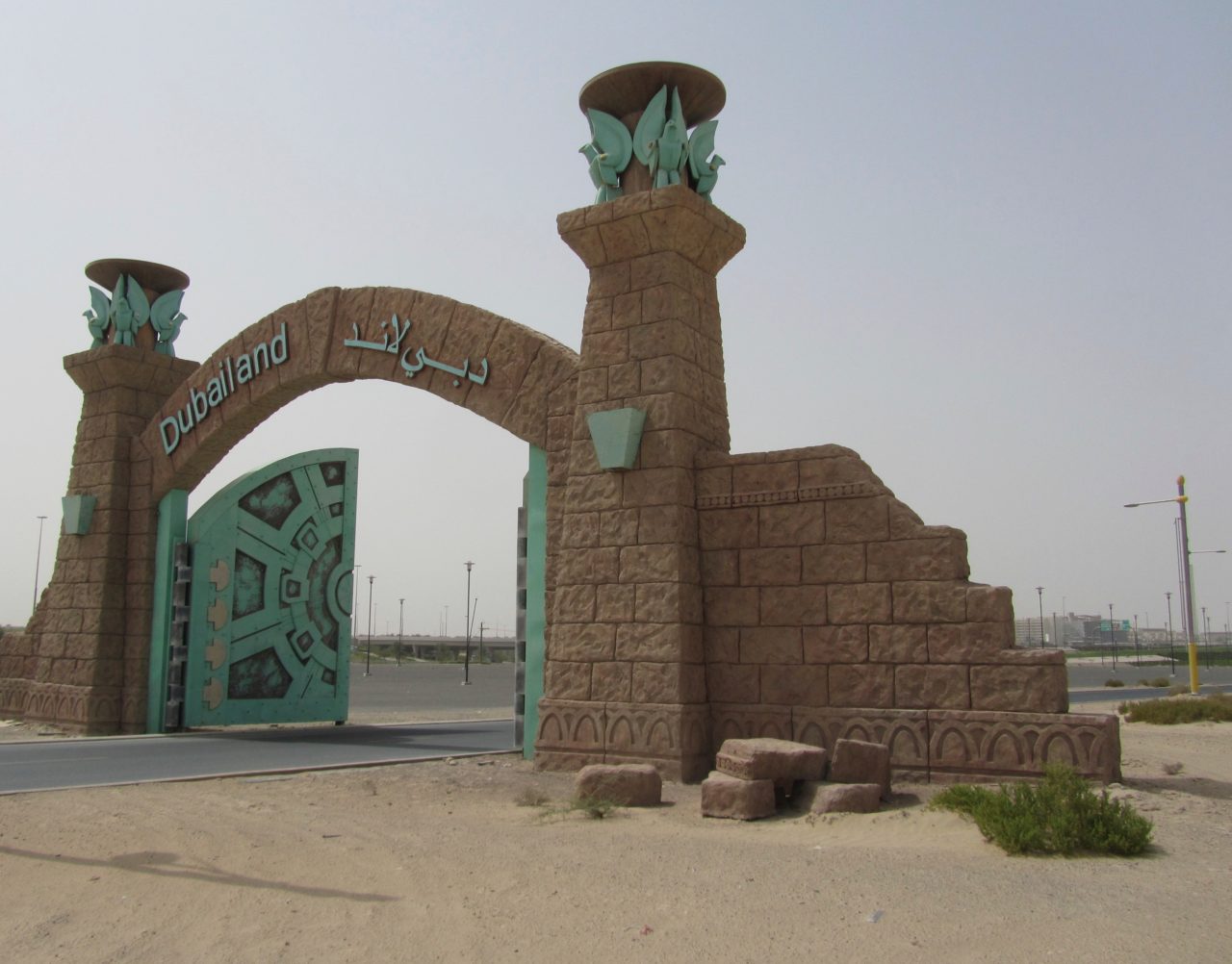
Now here’s the thing – though Bawadi, had it been built, would have been vast, it was actually just a microcosm of what was happening in Dubai at the time. It was meant to be only part of a much larger development called Dubailand, and dozens of other massive projects were announced in the years leading up to the crash.
Dubailand, touted as the largest collection of theme parks in the world, was meant to cover a whopping 107 square miles. A sales office with detailed models was built and residential and recreational developments were completed. However, the theme park plan came to little, and proposals for a Universal Studios park were scrapped a couple of years ago. Sue and I had moved to Dubai in 2007 as the construction boom fuelled by easy credit was reaching its peak.
It seemed as if mega-projects were being announced every week as companies that grandiosely described themselves as “master developers” vied with each other to produce the biggest, costliest, glitziest and most eye-catching designs. Creating elaborate miniature representations of vast, ostentatious projects for Dubai developers became an important income stream for the makers of architectural models.

There was to be an underwater hotel, multiple replicas of the Pyramids, the Taj Mahal and the Eiffel Tower, a rotating tower… the list was endless.
Dubai’s development boom was driven by the fact that its oil reserves were limited and dwindling fast. It urgently needed alternative revenue sources.
There’s no doubting its achievement in transforming itself into a shipping and aviation hub and tourism hotspot after 150 years of colonial neglect by Britain ended in 1971. And it did build the world’s tallest tower. But it over-reached itself spectacularly with all those wildly ambitious projects such as Bawadi.
It took years to clear up the mess. In 2015 Dubai Courts published a list of more than 150 projects that had been shelved, including the rotating tower.

It’s a good time to look back at the Bawadi story, as there are signs that the good old, bad old days are returning in Dubai. Talk of a replica of the Taj Mahal that would be bigger than the original and house a shopping mall and luxury hotel continues to rumble on, work on yet another tallest structure in the world is underway, and the world’s largest picture frame (yes) has already been completed.
In 2016 it was even reported that Bawadi was to be revived. Nothing more has been heard of this, and I’m not holding my breath.
My request to the developers for information failed to elicit a response, and the results of further inquiries suggest there are no plans to revive the project.
Back in 2010 I bumped into someone who’d been a top executive at Bawadi at, of all places, the set of the fourth Mission Impossible movie, which was being filmed in Dubai; he was doing a stint as an extra. In 2013 a bicycle track was opened along Al Qudra Road.
Top picture: Promotional rendering of the proposed Desert Gate hotels; photo: Bawadi.
June 2019
Dubai Projects That Got Stuck in the Sand
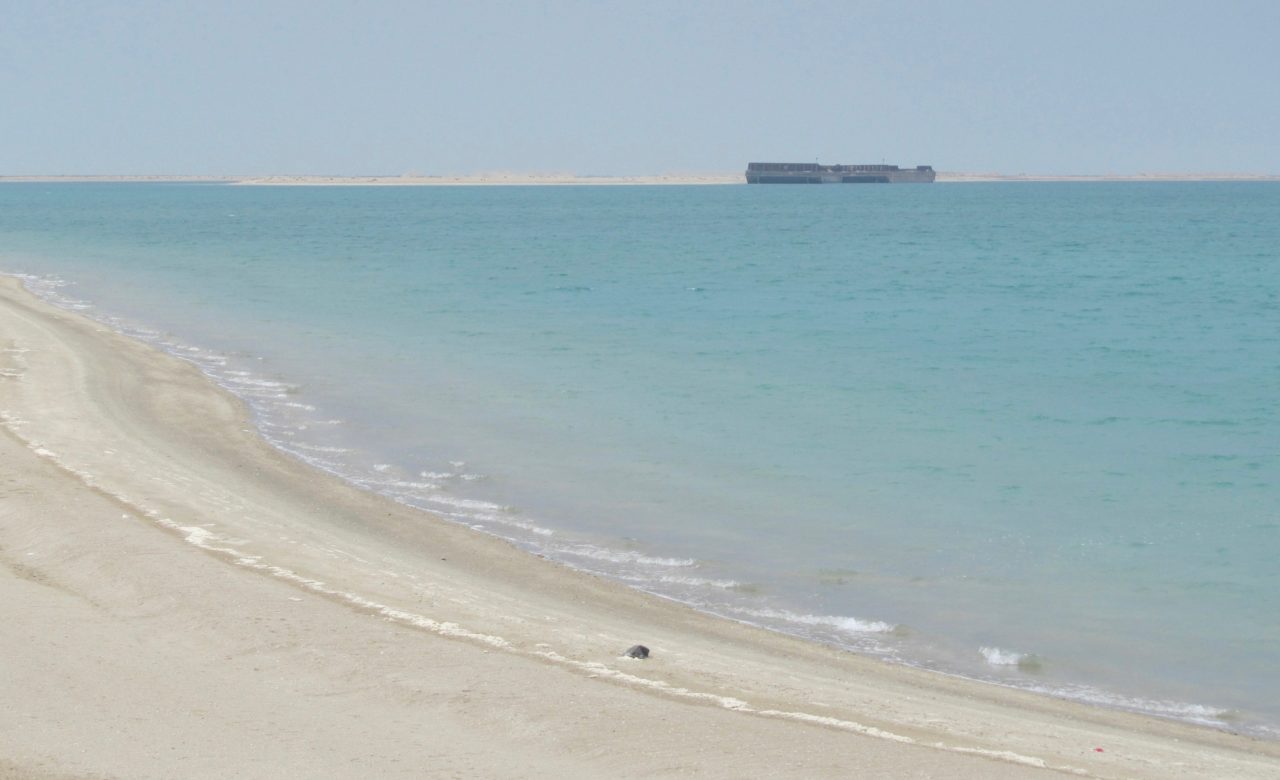 PALM JEBEL ALI: This was to be one of three giant palm tree-shaped artificial islands jutting miles out into the Gulf. Together with an associated development called Dubai Waterfront it was meant to house 1.7 million people. In 2008 Dubai’s population stood at 1.65 million. WHAT HAPPENED: Much of the reclamation work had been completed by the time work was halted because of the crash. Today the Palm and a crescent surrounding it stand empty, undeveloped and uninhabited.
PALM JEBEL ALI: This was to be one of three giant palm tree-shaped artificial islands jutting miles out into the Gulf. Together with an associated development called Dubai Waterfront it was meant to house 1.7 million people. In 2008 Dubai’s population stood at 1.65 million. WHAT HAPPENED: Much of the reclamation work had been completed by the time work was halted because of the crash. Today the Palm and a crescent surrounding it stand empty, undeveloped and uninhabited.
 PALM DEIRA: Another artificial island, this one was originally intended to be 4.5 miles wide and stretch 7.7 miles out to sea. More than a million people were meant to settle there. WHAT HAPPENED: Reclamation was halted before work on the palm shape had begun. A few areas were reclaimed close to the coast, and these now form the basis of a new, much more modest project called Deira Islands.
PALM DEIRA: Another artificial island, this one was originally intended to be 4.5 miles wide and stretch 7.7 miles out to sea. More than a million people were meant to settle there. WHAT HAPPENED: Reclamation was halted before work on the palm shape had begun. A few areas were reclaimed close to the coast, and these now form the basis of a new, much more modest project called Deira Islands.
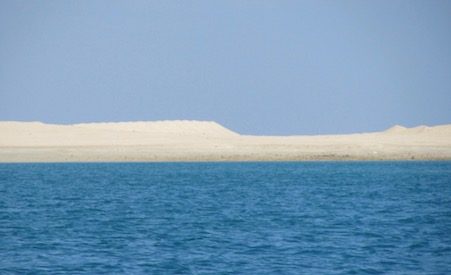 THE WORLD ISLANDS: A collection of 300 artificial islands supposedly in the shape of countries. Buyers were invited to purchase islands and build hotels, resorts and homes on them. WHAT HAPPENED: A handful of islands have been developed, but most remain empty blobs of sand surrounded by the blue waters of the Gulf.
THE WORLD ISLANDS: A collection of 300 artificial islands supposedly in the shape of countries. Buyers were invited to purchase islands and build hotels, resorts and homes on them. WHAT HAPPENED: A handful of islands have been developed, but most remain empty blobs of sand surrounded by the blue waters of the Gulf.
 FALCONCITY OF WONDERS: Falcon-shaped mega-development that was to have 30,000 homes and recreations of the famous buildings and structures such as the pyramids, the Eiffel Tower, the Leaning Tower of Pisa and the Great Wall of China. WHAT HAPPENED: Several residential units have been completed, but most of the site remains undeveloped and there’s no sign of the Eiffel Tower and the rest. Cement for the foundations of one of the pyramids has reportedly been poured.
FALCONCITY OF WONDERS: Falcon-shaped mega-development that was to have 30,000 homes and recreations of the famous buildings and structures such as the pyramids, the Eiffel Tower, the Leaning Tower of Pisa and the Great Wall of China. WHAT HAPPENED: Several residential units have been completed, but most of the site remains undeveloped and there’s no sign of the Eiffel Tower and the rest. Cement for the foundations of one of the pyramids has reportedly been poured.
...And Ones That Succeeded
 PALM JUMEIRAH: The original tree-shaped archipelago extends three miles out to sea and has been extensively developed with apartments and villas, popular hotels such as the Atlantis, shops and restaurants. Some residents like to swim between the fronds.
PALM JUMEIRAH: The original tree-shaped archipelago extends three miles out to sea and has been extensively developed with apartments and villas, popular hotels such as the Atlantis, shops and restaurants. Some residents like to swim between the fronds.
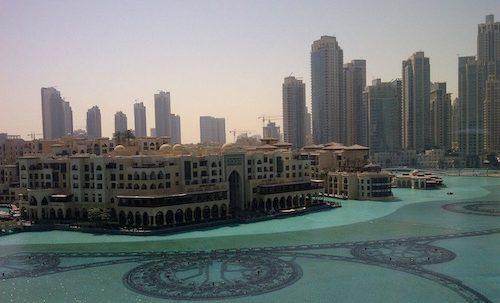 DOWNTOWN DUBAI: Lively residential and commercial area built around the Burj Khalifa, the world’s tallest tower. Includes the vast Dubai Mall and the Dubai Fountain.
DOWNTOWN DUBAI: Lively residential and commercial area built around the Burj Khalifa, the world’s tallest tower. Includes the vast Dubai Mall and the Dubai Fountain.
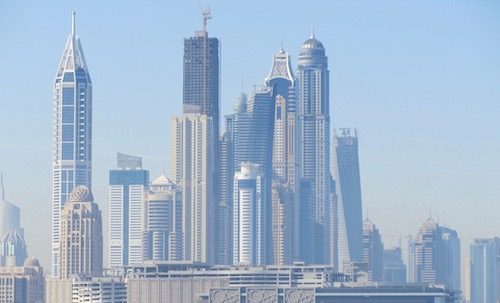 DUBAI MARINA: The word “marina” often evokes images of quaint old harbours, but that’s not the Dubai way. Some may find the crush of towers here overwhelming, though many residents love it.
DUBAI MARINA: The word “marina” often evokes images of quaint old harbours, but that’s not the Dubai way. Some may find the crush of towers here overwhelming, though many residents love it.
RELATED
 DUBAI IS A PLACE where there’s always something new to see – join us we visit 10 of them, including the QE2 Hotel, the wacky Dubai Frame, and our favourite bar in the city. READ MORE
DUBAI IS A PLACE where there’s always something new to see – join us we visit 10 of them, including the QE2 Hotel, the wacky Dubai Frame, and our favourite bar in the city. READ MORE
 THE QUEEN ELIZABETH 2, the much-loved liner that traversed the world’s oceans for nearly 40 years, has opened as a floating luxury hotel in Dubai, bringing a tortuous 10-year saga round full circle. READ MORE
THE QUEEN ELIZABETH 2, the much-loved liner that traversed the world’s oceans for nearly 40 years, has opened as a floating luxury hotel in Dubai, bringing a tortuous 10-year saga round full circle. READ MORE
 GULF ARABS LOVE BIG CATS and other exotic animals, and many sheikhs have private zoos. Normally these places are strictly out of bounds, but Afaranwide managed to have a look inside. READ MORE
GULF ARABS LOVE BIG CATS and other exotic animals, and many sheikhs have private zoos. Normally these places are strictly out of bounds, but Afaranwide managed to have a look inside. READ MORE
 SUDDENLY, THE ROOM TURNED BLACK: I have no photographs of the weddings of Dubai locals I’ve been to. You’re not allowed to take phones or cameras along, and only the official… READ MORE
SUDDENLY, THE ROOM TURNED BLACK: I have no photographs of the weddings of Dubai locals I’ve been to. You’re not allowed to take phones or cameras along, and only the official… READ MORE
RECOMMENDED
 WELCOME TO OUR WORLD! Afaranwide’s home page – this is where you can find out about our latest posts and other highlights. READ MORE
WELCOME TO OUR WORLD! Afaranwide’s home page – this is where you can find out about our latest posts and other highlights. READ MORE
 TOP 10 ATTRACTIONS: Many of the world’s most popular tourists sites are closed because of the coronavirus crisis, but you can still visit them virtually while you’re self-isolating. READ MORE
TOP 10 ATTRACTIONS: Many of the world’s most popular tourists sites are closed because of the coronavirus crisis, but you can still visit them virtually while you’re self-isolating. READ MORE
 SHIMLA, QUEEN OF THE HILLS: Government officials once retreated to Shimla in the foothills of the Himalayas to escape India’s blazing hot summers. Now tourists make the same journey. READ MORE
SHIMLA, QUEEN OF THE HILLS: Government officials once retreated to Shimla in the foothills of the Himalayas to escape India’s blazing hot summers. Now tourists make the same journey. READ MORE
 TEN THINGS WE LEARNED: Our up-to-the-minute guide to creating a website, one step at a time. The costs, the mistakes – it’s what we wish we’d known when we started blogging. READ MORE
TEN THINGS WE LEARNED: Our up-to-the-minute guide to creating a website, one step at a time. The costs, the mistakes – it’s what we wish we’d known when we started blogging. READ MORE
 TROUBLED TIMES FOR EXPATS: Moving abroad can seem an idyllic prospect, but what happens when sudden upheavals or the inescapable realities of life intrude? READ MORE
TROUBLED TIMES FOR EXPATS: Moving abroad can seem an idyllic prospect, but what happens when sudden upheavals or the inescapable realities of life intrude? READ MORE


